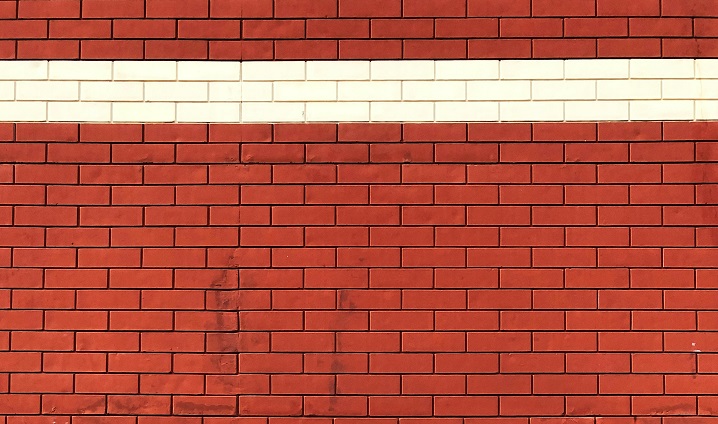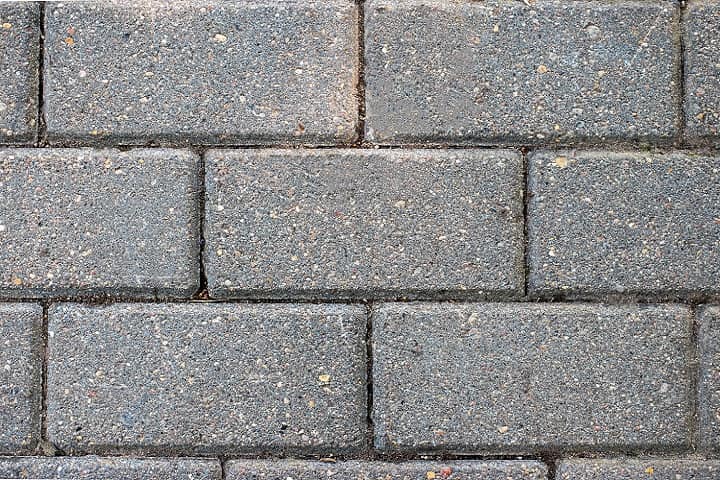Difference Between Concrete Blocks and Traditional Red Bricks
Building materials are materials used to construct different structures, including houses, schools, hospitals, roads, airports, pavements, etc. For construction purposes, numerous building materials are available, like bricks, concrete blocks, wood, cement, metal, and clay. The historical implication of Red Bricks dates back thousands of years. Humans have used Red Bricks or Clay Bricks to build structures that carry historical significance. Some experts believe that Arabs invented bricks because they can be seen in the 12th century Iranian Shibeli Tower. As Red Bricks have the importance of the past, Concrete Blocks are about to become the flag bearers of modern civilization.
Checklist
What are Red Bricks?
Redbrick or clay brick is one of the oldest and most popular construction materials. It has widespread usage globally for different construction purposes. It is relatively cheap, durable, easy to handle and work with. Most buildings in Bangladesh are made from red bricks.

Redbrick is manufactured by mixing clay, water, and aggregate. Bricks are rectangular in shape and solid inside. Based on the manufacturing process, bricks are of two types:
Unburnt or Sun-dried Bricks
This type of brick is made from clay and then dried under the heat received from the sun. Due to its manufacturing process, unburnt bricks are not strong enough and used in permanent structures. However, its less durability makes it an ideal choice for temporary structures.
Burnt Clay Bricks
The clay is burned in kilns in manufacturing plants. The burning process makes burnt clay bricks very strong and used for various construction works. These are high-quality building materials.
Burnt clay bricks are further divided into four categories. These are:
- First Class Bricks: This is of the highest quality of bricks compared to other classes of burnt clay bricks. They come in uniform size and colour. An intense ringing or clicking sound is made when two first-class burnt clay bricks are struck together. These are also free from cracks, chips, flaws and have flat surfaces. They absorb less water and provide more strength. These bricks are used in the external wall, reinforced brickwork, flooring, arches, etc. They are of higher cost than other classes.
- Second Class Bricks: These bricks are also the same size, but they do not show uniformity of color and shape as first-class bricks. Some may have tiny cracks, and edges are not as sharp as first-class bricks. Except flooring, they are used for exterior plastering, compound walls, partition walls, and interior works. They exhibit more tensile strength and can absorb more water.
- Third Class Bricks: These bricks show a slight reddish-yellow colour, not burnt wholly like first- and second-class bricks. They offer rough surfaces, irregular and distorted edges. They exhibit less strength and higher water absorption. These are mainly used in dry climates and for temporary structures like small brick foundations, paving, etc.
- Fourth Class Bricks: They are poor in quality and strength. They are the cheapest to manufacture. They can break easily and should not be used in the primary structure of any building. These bricks are generally used as aggregate for concrete in foundations, floors, roads, etc.
The Emergence of Concrete Blocks
Compared to red bricks, concrete blocks are new inventions in building materials. After inventing Portland cement in 1824 by English stonemason Joseph Aspdin, it became a crucial component in creating concrete. The first hollow concrete block was designed in 1890 by Harmon S. Palmer in the US. Previously, each concrete block was hand-cast, but with the advancement of technology, machines can create identical concrete blocks at a never- imaginable pace, according to Encyclopedia.

A concrete block is entirely made of concrete bonded together by using mortar to build permanent structures. Concrete blocks can be hollow or solid. It is usually referred to as CMU or concrete masonry unit. Concrete blocks are easy to work with as they are more prominent in size, so blockwork becomes much faster than traditional brickwork. Concrete blocks can be used as masonry units for panels, load-bearing walls, or partitions. Concrete blocks are mainly of two categories:
Solid Concrete Blocks: Solid concrete blocks contain more than 75% of the total mass filled with concrete. These are relatively much heavier than hollow concrete blocks. Solid concrete blocks are used in constructing fireplaces, walls to protect against hazardous weather conditions, chimneys, foundations, retaining walls, and garden walls.
Hollow Concrete Blocks: Concrete blocks that contain substantial parts between 50% – 70% of the total volume are called hollow concrete blocks. Despite having holes or cavities, they have incredible strength to reduce their overall mass. There are some differences between solid and hollow concrete blocks. Different sizes of hollow concrete blocks are available in the Bangladeshi market. They are mainly used in residential and commercial buildings, high-rise buildings, partition walls in the interior and exterior, boundary walls, and rooftops.
Difference Between Concrete Block and Red Brick
We all aspire to build with such materials to last forever. People always want to choose materials that best fit their budget and provide incredible strength at the same time. With durability and strength in mind, two-building block materials come into play: concrete and traditional red bricks. There are numerous differences between concrete blocks and red bricks as they are entirely different materials. The following section will discuss key differences between concrete blocks and red bricks based on properties of building block materials:
Compressive and Tensile Strength
Compressive strength is an important physical property of building block materials. Concrete blocks incorporate higher compressive strength compared to red bricks. This is because concrete blocks are manufactured so that they can endure higher compressive pressure. This is one of the critical reasons concrete blocks are being used in high-rise buildings, as they can withstand higher pressure than traditional red bricks.
Concrete Blocks are far superior in tensile strength to traditional red bricks. Even though red bricks are solid and much denser, they are brittle, which reduces their tensile strength. On the other hand, concrete blocks exhibit incredible tensile strength compared to red bricks. This property also reduces the breakage of products during transportation.
Modern buildings are pushing boundaries of how tall an artificial structure can be. High-rise buildings would not be possible to build with traditional red bricks as they do not have enough strength to support such massive weight of the whole structure. By using concrete blocks, engineers have overcome such issues.
Source: The Constructor
Cost of Construction
Cost of construction on top of the priority list of all property owners. People want to build the most durable structure at the lowest price possible. Residential and commercial buildings consider cost before anything else as it can determine various other factors for the property. When considering cost, concrete blocks are preferred over red bricks due to numerous reasons. Viewing concrete blocks as masonry units requires much less quantity to achieve the same strength as red bricks. The raw materials to make concrete blocks are readily available, and machine-made concrete blocks come in the exact sizes and shapes, reducing defective products. Manufacturing red bricks require red soil excavating, which is not easily found everywhere, and too much excavation can lead to many hazardous conditions for the environment.
Another factor that reduces red bricks’ convenience is breakage due to transportation. Red bricks are brittle and can break easily while transporting large distances. Breakage can introduce higher costs for builders. Even though red bricks are cheap, the overall cost increases with red bricks because they require more mortar for joints and plaster. Constructing a wall out of concrete blocks can save as much as 17% more than constructing the same wall out of conventional bricks.
Sound Insulation
Concrete blocks are an excellent choice for building materials in busy urban areas, especially near airports or railway stations. Residents in busy areas suffer from immense noise pollution, which hampers the quality of life. Due to concrete blocks’ natural mass and damping factors, they offer excellent acoustic performance. More than 75% of outside noise can be blocked using concrete walls, and this figure can be improved by maintaining proper sound isolation protocols.
On the other hand, red bricks cannot provide sound isolation as well as concrete block units. However, red bricks also allow decent acoustic performance. Nowadays, bricks are also built with acoustic dampening properties.
Stability
Concrete blocks are much lighter compared to red bricks. Hollow concrete block’s lighter weight makes it more stable, workable, and durable for building modern high-rise structures. Furthermore, hollow concrete blocks allow more earthquake-resistant configurations than red bricks. Greater compressive and tensile strength allow concrete blocks to be more stable in earthquake-prone regions.
Waterproof Properties
Another critical difference between concrete blocks and red brick is their waterproofing capabilities. Builders prefer using concrete blocks in high-moisture and muddy locations because concrete blocks can repel water much better than traditional red bricks.
If red bricks are exposed to damp weather, they can get damaged easily, and molds can form, compromising their quality. So, developers prefer using concrete blocks in locations that witness higher rainfalls.
Thermal Insulation
Thermal conductivity is a notable difference between concrete blocks and red bricks. Concrete blocks can absorb heat quickly and warm the insides on hot summer days. It can increase electricity costs as residents use air conditioners to cool down rooms.
Red bricks have a higher thermal density, which allows them to absorb more heat than concrete blocks. So, red bricks can absorb heat in the daytime and release it at night. This is an ideal scenario to keep inside buildings warm in the winter and cool in the summer. So, red bricks are more suitable building materials in high-temperature regions.
Durability
Concrete blocks and red bricks both are durable materials for construction purposes. However, red bricks are considered more durable than concrete blocks as red bricks require little to no maintenance even after a long time. Concrete blocks require some maintenance as they are prone to cracking after a long period.
Environmental Impact
One of the significant differences between concrete blocks and red bricks that have inspired people to choose concrete blocks is their eco-friendliness. Concrete blocks are manufactured using fly ash instead of stone aggregates. Fly ash is a by-product of thermal plants. Instead of dumping fly ash into the Earth, which can make the soils toxic, researchers have figured out how to use fly ash to make concrete blocks. It reduces cost and strengthens the concrete blocks internally. With the advancement of technology, concrete blocks are now being produced with incredibly accurate machines that spit out identical dimensional concrete blocks. So, concrete blocks will always be cheaper than traditional red bricks.

Red bricks are considered harmful to the environment as they have a higher carbon footprint than concrete blocks. The manufacturing process involves the excavation of topsoil of Earth that can deplete minerals from nature. Furthermore, it creates a harmful impact on the environment while being manufactured at plants. As a result, green experts do not recommend using red bricks to construct buildings.
Aesthetic Value
Red bricks are more popular than concrete blocks in terms of aesthetic values. People love the natural texture red bricks have more than concrete blocks’ dull and grayish look. Aesthetic values are primarily subjective, but many modern building interiors are also designed with concrete blocks.
Which Brick Type Should You Purchase?
Developers or contractors decide which brick type to purchase after carefully monitoring the construction criteria. However, concrete blocks are gaining popularity worldwide due to their numerous benefits over traditional red bricks. The differences between concrete blocks and red bricks should be appropriately analyzed before purchasing as it can impact the building’s quality, cost-effectiveness, and aesthetics.
Mir Concrete Block started its journey in 2004. Mir Concrete Blocks are manufactured maintaining a high standard. The company produces hollow blocks, paving blocks, paving/parking tiles, etc. Concrete blocks are rising in Bangladesh, and Mir Concrete Block is adamant about providing the best quality concrete blocks to its esteemed customers.
Frequently Asked Questions (FAQs)
Which brick type is better?
Ans: It depends on your construction needs. However, you can never go wrong with concrete blocks as they provide better cost efficiency and strength.
Do concrete blocks create a harmful effect on the environment?
Ans: Almost all manufacturing processes have a carbon footprint that can impact the environment. However, concrete blocks are considered environmentally friendly due to less impact on the environment than traditional red bricks.
Where can I purchase concrete blocks in Bangladesh?
Ans: Many concrete block manufacturers in Bangladesh, including Mir Concrete Block, produce a range of high-standard concrete blocks.
Is a brick wall stronger than a block wall?
Ans: No. Concrete block walls are much more durable than brick walls.
Are concrete houses cold inside?
Ans: If constructed properly, concrete block houses are virtually unaffected by extreme temperatures.








